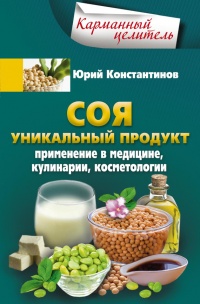Читать книгу "Эффект теломер. Революционный подход к более молодой, здоровой и долгой жизни - Элисса Эпель"
Шрифт:
Интервал:
Закладка:
10. Jackowska, M., et. al., “Short Sleep Duration Is Associated with Shorter Telomere Length in Healthy Men: Findings from the Whitehall II Cohort Study,” PLOS ONE 7, no. 10 (2012): e47292, doi:10.1371/journal.pone.0047292.
11. Cribbet et al., “Cellular Aging and Restorative Processes.” (See #9 above.)
12. Ibid.
13. Prather, A. A., et al., “Tired Telomeres: Poor Global Sleep Quality, Perceived Stress, and Telomere Length in Immune Cell Subsets in Obese Men and Women,” Brain, Behavior, and Immunity 47 (July 2015): 155–162, doi:10.1016/j.bbi.2014.12.011.
14. Chen, W. D., et al., “The Circadian Rhythm Controls Telomeres and Telomerase Activity,” Biochemical and Biophysical Research Communications 451, no. 3 (August 29, 2014): 408–414, doi:10.1016/j.bbrc.2014.07.138.
15. Ong, J., and D. Sholtes, “A Mindfulness-Based Approach to the Treatment of Insomnia,” Journal of Clinical Psychology 66, no. 11 (November 2010): 1175–1184, doi:10.1002/jclp.20736.
16. Ong, J. C., et al., “A Randomized Controlled Trial of Mindfulness Meditation for Chronic Insomnia,” Sleep 37, no. 9 (September 1, 2014): 1553–1563B, doi:10.5665/sleep.4010.
17. Chang, A. M., D. Aeschbach, J. F. Duffy, C. A. and Czeisler, “Evening Use of Light-Emitting eReaders Negatively Affects Sleep, Circadian Timing, and Next-Morning Alertness,” Proceedings of the National Academy of Sciences of the United States of America 112, no. 4 (January 2015): 1232–1237, doi:10.1073/pnas.1418490112.
18. Dang – Vu, T. T., et al., “Spontaneous Brain Rhythms Predict Sleep Stability in the Face of Noise,” Current Biology 20, no. 15 (August 10, 2010): R626–R627, doi:10.1016/j.cub.2010.06.032.
19. Griefhan, B., P. Bröde, A. Marks, and M. Basner, “Autonomic Arousals Related to Traffic Noise During Sleep,” Sleep 31, no. 4 (April 2008): 569–577.
20. Savolainen, K., et al., “The History of Sleep Apnea Is Associated with Shorter Leukocyte Telomere Length: The Helsinki Birth Cohort Study,” Sleep Medicine 15, no. 2 (February 2014): 209–212, doi:10.1016/j.sleep.2013.11.779.
21. Salihu, H. M., et al., “Association Between Maternal Symptoms of Sleep Disordered Breathing and Fetal Telomere Length,” Sleep 38, no. 4 (April 1, 2015): 559–566, doi:10.5665/sleep.4570.
22. Shin, C., C. H. Yun, D. W. Yoon, and I. Baik, “Association Between Snoring and Leukocyte Telomere Length,” Sleep 39, no. 4 (April 1, 2016): 767–772, doi:10.5665/sleep.5624.
1. Mundstock, E., et al., “Effect of Obesity on Telomere Length: Systematic Review and Meta-analysis,” Obesity (Silver Spring) 23, no. 11 (November 2015): 2165–2174, doi:10.1002/oby.21183.
2. Bosello, O., M. P. Donataccio, and M. Cuzzolaro, “Obesity or Obesities? Controversies on the Association Between Body Mass Index and Premature Mortality,” Eating and Weight Disorders 21, no. 2 (June 2016): 165–174, doi:10.1007/s40519–016–0278–4.
3. Farzaneh-Far, R., et al., “Telomere Length Trajectory and Its Determinants in Persons with Coronary Artery Disease: Longitudinal Findings from the Heart and Soul Study,” PLOS ONE 5, no. 1 (January 2010): e8612, doi:10.1371/journal.pone.0008612.
4. “IDF Diabetes Atlas, Sixth Edition,” International Diabetes Federation, http://www.idf.org/atlasmap/atlasmap?indicator=i1&date=2014, accessed September 16, 2015.
5. Farzaneh-Far et al., “Telomere Length Trajectory and Its Determinants in Persons with Coronary Artery Disease.” (See #3 above.)
6. Verhulst, S., et al., “A Short Leucocyte Telomere Length Is Associated with Development of Insulin Resistance,” Diabetologia 59, no. 6 (June 2016): 1258–1265, doi:10.1007/s00125–016–3915–6.
7. Zhao, J., et al., “Short Leukocyte Telomere Length Predicts Risk of Diabetes in American Indians: The Strong Heart Family Study,” Diabetes 63, no. 1 (January 2014): 354–362, doi:10.2337/db13–0744.
8. Willeit, P., et al., “Leucocyte Telomere Length and Risk of Type 2 Diabetes Mellitus: New Prospective Cohort Study and Literature-Based Meta-analysis.” PLOS ONE 9, no. 11 (2014): e112483, doi:10.1371/journal.pone.0112483.
9. Guo, N., et al., “Short Telomeres Compromise b-Cell Signaling and Survival,” PLOS ONE 6, no. 3 (2011): e17858, doi:10.1371/journal.pone.0017858.
10. Formichi, C., et al., “Weight Loss Associated with Bariatric Surgery Does Not Restore Short Telomere Length of Severe Obese Patients after 1 Year,” Obesity Surgery 24, no.12 (December 2014): 2089–2093, doi:10.1007/s11695–014–1300–4.
11. Gardner, J. P., et al., “Rise in Insulin Resistance is Associated with Escalated Telomere Attrition,” Circulation 111, no. 17 (May 3, 2005): 2171–2177.
12. Fothergill, Erin, Juen Guo, Lilian Howard, Jennifer C. Kerns, Nicolas D. Knuth, Robert Brychta, Kong Y. Chen, et al. “Persistent Metabolic Adaptation Six Years after The Biggest Loser Competition.” Obesity (Silver Spring, Md.), May 2, 2016. doi:10.1002/oby.21538.
13. Kim, S., et al., “Obesity and Weight Gain in Adulthood and Telomere Length,” Cancer Epidemiology, Biomarkers & Prevention 18, no. 3 (March 2009): 816–820, doi:10.1158/1055–9965.EPI-08–0935.
14. Cottone, P., et al., “CRF System Recruitment Mediates Dark Side of Compulsive Eating,” Proceedings of the National Academy of Sciences of the United States of America 106, no. 47 (November 2009): 20016–20020, doi:0.1073/pnas.0908789106.
15. Tomiyama, A. J., et al., “Low Calorie Dieting Increases Cortisol,” Psychosomatic Medicine 72, no. 4 (May 2010): 357–364, doi:10.1097/ PSY.0b013e3181d9523c.
16. Kiefer, A., J. Lin, E. Blackburn, and E. Epel, “Dietary Restraint and Telomere Length in Pre– and Post-Menopausal Women,” Psychosomatic Medicine 70, no. 8 (October 2008): 845–849, doi:10.1097/PSY.0b013 e318187d05e.
17. Hu, F. B., “Resolved: There Is Sufficient Scientific Evidence That Decreasing Sugar-Sweetened Beverage Consumption Will Reduce the Prevalence of Obesity and Obesity-Related Diseases,” Obesity Reviews 14, no. 8 (August 2013): 606–619, doi:10.1111/obr.12040; and Yang, Q., et al., “Added Sugar Intake and Cardiovascular Diseases Mortality Among U.S. Adults,” JAMA Internal Medicine 174, no. 4 (April 2014): 516–524, doi:10.1001/jamainternmed.2013.13563.
18. Schulte, E. M., N. M. Avena, and A. N. Gearhardt, “Which Foods May Be Addictive? The Roles of Processing, Fat Content, and Glycemic Load,” PLOS ONE 10, no. 2 (February 18, 2015): e0117959, doi:10.1371/ journal.pone.0117959.
19. Lustig, R. H. et al., “Isocaloric Fructose Restriction and Metabolic Improvement in Children with Obesity and Metabolic Syndrome,” Obesity 2 (February 24, 2016): 453–60. doi:10.1002/oby.21371. Epub Oct 26, 2015.
Внимание!
Сайт сохраняет куки вашего браузера. Вы сможете в любой момент сделать закладку и продолжить прочтение книги «Эффект теломер. Революционный подход к более молодой, здоровой и долгой жизни - Элисса Эпель», после закрытия браузера.




